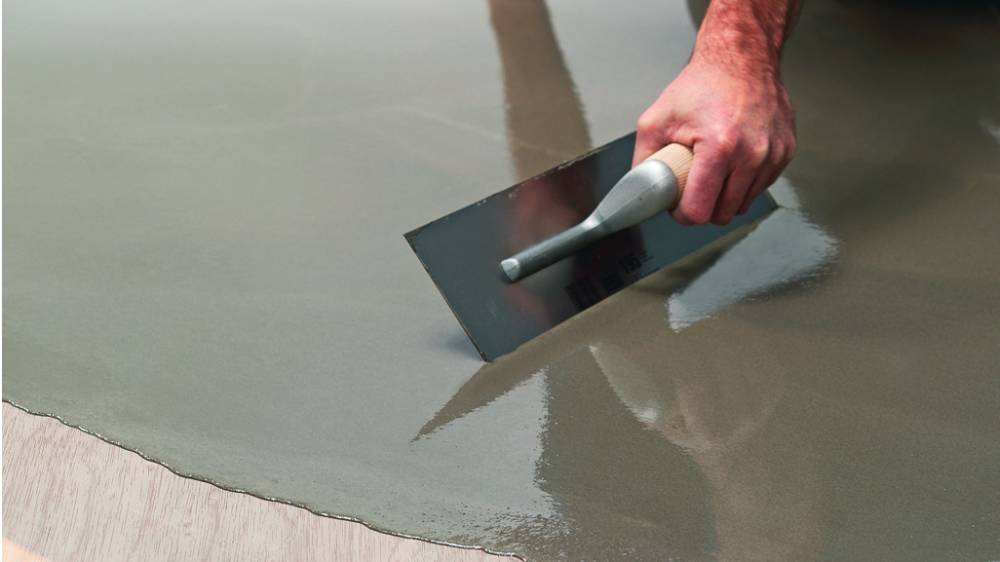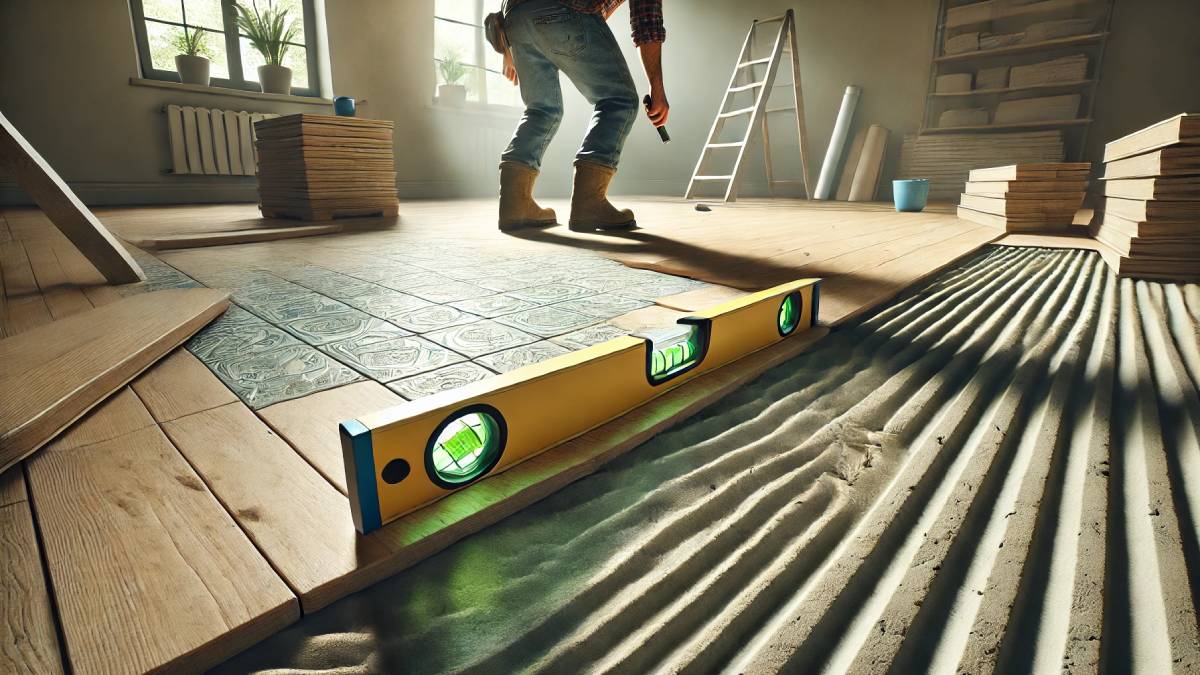Floor leveling is a vital step in any flooring process, and it needs to be done correctly to ensure a smooth and even surface after finishing the flooring project. However, some common problems with flooring leveling affect the whole process and the final appearance of the floored space. In this article, some of the most common floor leveling issues and solutions will be explained.
1. Uneven subfloor
An uneven subfloor is one of the most frequent problems during the flooring installation. Whether the flooring type is wood or concrete, uneven floors can cause problems throughout the project, leading to cracks, gaps, and wear.
To fix uneven floors:
- For wood subfloors, you can sand down the bumped spots and also use plywood and shims to fill in the empty and low areas of the floor.
- For concrete floors, you can use a self-leveling compound to level the surface. Make sure that you have already cleaned the surface before using any compound to ensure the right adhesion.
💡You can also read more about:
2. Cracks in concrete subfloors
Cracks in concrete subfloors are also a common issue that mostly happens in older places. This problem can cause moisture seeping which later leads to mold and damage to your final flooring.
To fix cracks in concrete subfloors:
- Fill the cracks using epoxy-based crack fillers to make the floor stable and prevent the cracks spread through the whole floor.
- After filling the cracks and letting them dry, use a self-leveling compound to even and smooth the surface. If there are deeper cracks, you can also use cement-based compounds to fill cracks.
3. Dips or low spots in the subfloor
The next frequent problem in subfloors is dips or low spots. This issue, which leads to uneven, unstable, and sagging floors, can cause issues in tile and laminate flooring installation.
To fix dips or low spots in subfloors:
- If the dips and low spots are small, you can use a thin layer of self-leveling compound or floor leveling pad to smooth the floor.
- If the problem is deeper, you can use a thicker layer of self-leveling compound. You need to let it rest and dry before continuing the flooring installation.
3. High spots in the subfloor
High spots in the subfloors are another common problem in flooring installation projects. This issue, which mostly happens in wood subfloors, can prevent the whole process from being finished correctly as it can cause significant uneven spots on the floor.
To fix high spots issues in subfloors:
- If there are concrete high spots, you can use a concrete grind to reduce the high spots and continue it until an even surface.
- If there are high spots on the wood subfloors, you can sand the high spots to reduce the height of them.
💡It is crucial to always check everything that can cause high spots in the subfloors such as joist problems.
4. Moisture problems in subfloors
Moisture is one of the common problems in subfloors, especially concrete floors, which leads to cracks, mold, and adhesive issues when installing some types of flooring like laminate or vinyl flooring.
To fix moisture issues in subfloors:
- To start, you need to measure the level of moisture using a moisture meter. If the level of moisture is high, try to install vapor barriers or use a moisture-resistant leveling compound.
- Make sure there is suitable ventilation in places such as the kitchen, bathroom, and basement that are exposed to moisture problems. Using dehumidifiers can also help reduce the level of moisture in the mentioned places before floor leveling.

5. Inconsistent application of leveling compound
Another frequent problem when leveling the floors yourself is the inconsistent application of the leveling compound that leads to low or high spots. This process can be challenging when trying to create a smooth surface and certainly needs enough experience to be done problem-free.
However, there are still solutions to resolve the inconsistent leveling compound application:
- Follow the self-leveling compound manufacturer instructions to mix the compound correctly.
- Try to use a spiked roller to spread the leveling compound evenly. To start leveling, you can apply the leveling compound from one side of the room and then immediately use the roller to spread it fast. Make sure you cover all low spots.
- Try to divide large spaces into sections to have enough time to spread the self-leveling compound without any rush as it spreads and gets dried quickly.
- Asking for help from flooring professionals is the safest way to make sure everything in floor leveling goes well.

6. Subfloor deflection or movement
Subfloor deflection or movement is the issue in floor leveling that can cause cracks in tiles, instability, and gaps in floorboards. This mainly happens in old places where there are joist problems.
To fix subfloor movement or deflection:
- Inspect the joists in the wooden subfloors to see which joist(s) caused the issue. Improving the joist structure by adding extra joists (joist sistering) can help reduce this problem. You can also use plywood to fasten the subfloor and reduce deflection.
- If the joist issue is big and cannot be treated by the mentioned solution, you may need to rebuild that portion(s) of the subfloor to have a stable floor.
7. Bonding issues between floor levels
Bonding problem between old subfloor and leveling compound is another possible and common issue that happens due the wrong subfloor preparation before applying the leveling compound. This problem can cause cracking, shifting, and peeling over time.
To fix the bonding issue between floor levels:
- Before applying a self-leveling compound on the old subfloor, ensure that you have already cleaned and removed dirt, dust, and grease, and everywhere is dry.
- Try to use a suitable floor primer that is compatible with your subfloor material to improve adhesion.
- In case of a bonding issue, you need to remove the damaged section, remove it, and apply the compound again.
Conclusion
Floor leveling is one of the basic and essential steps in flooring projects which should be done carefully and correctly to prevent any problem in subfloors and have a smooth final finish. However, there are more frequent issues in the floor leveling process than may happen due to old buildings’ structures, moisture, or even lack of experience in performing the floor leveling. Therefore, it is highly recommended to consult with flooring experts to avoid every possible problem that can cost you money, time, and energy. MA Flooring, the floor leveling service provider in Melbourne, delivers the latest methods in the flooring field and provides its clients with effective solutions in the floor leveling process.

